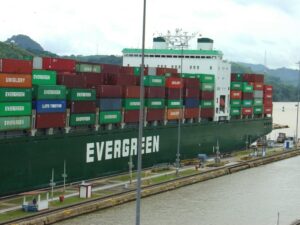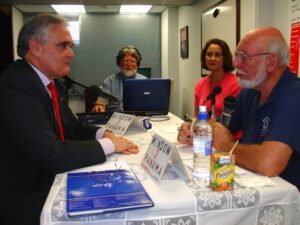On June 26th 2016, an event in Panama took the spotlight on the world stage. The event to which I refer was the opening and dedication of the expanded Panama Canal.
In the 102 years after the canal originally opened in 1914, Worldwide shipping has changed. Once the United States had a naval fleet in every ocean of the world, the canal lost much of it’s unique strategic value and was not as vital to the national security of the USA as it had been. President Jimmy Carter knew that and mads the decision to present the canal to Panama. For a variety of reasons, that was a correct decission. However, the canal is still an incredibly vital resource as a commercial enterprise, not just for Panama, but for the entire world.
There are essentially two major canals that facilitate world shipping. The Suez Canal, and the Panama Canal. Other options, like the proposed canal in Nicaragua, and the “dry” canal in Costa Rica, could be a factor in future shipping. However, the Nicaragua Canal is not going to happen. The dry canal in Costa Rica, is essentially a good idea, but it has not yet been approved, and it would take a great design to even come close to having the utility of the Panama Canal. It could however be a profitable alternative for a certain class of shipping.
Proposals for a dry canal have also come from Mexico, Honduras, El Salvador, Guatemala, Columbia, and in a sense, even the USA . Each of these countries is considering the creation of a dry canal, but as interesting as that may be, the Panama Canal is here today, alive and well, proven and poised to write a new chapter in canal history.
The quick view of what officially opened on June 26th is a canal that has the capacity to allow ships to use the canal that heretofore were too big to fit into the original locks built in the early 1900’s. For years, the largest ships that could fit into the locks of the Panama canal were known as Panamax.

It is easy to see why they were given that name. They are built to the maximum size that allowed them to use the existing locks of the Panama Canal. Indeed, they fit nicely into the turn of the century locks, but with only inches to spare on each side. However, as time passed, the realities of maximizing profits dictated that ships be built larger to make them more profitable. Suddenly the Panama Canal was showing her age and something had to be done. There was also the need to conserve the precious water that allows the canal to operate.
In 2006, a proposal to expand the canal was put to a countrywide vote, and the people of Panama chose to expand and modernize their canal. The expansion included both the size of the new lock chambers, and a widening of various parts of the canal to allow larger ships to use the waterway. A great deal of thought and research went into the design of the new canal, and in 2007, the Panama Canal Authority (ACP) started a 5 billion dollar Panama Canal expansion project.
The the task of making the expanded canal a reality was given to the newly chosen CEO, and Canal Administrator, Jorge L. Quijano. He was already an employee of the canal, and through his service, he proved to the board of directors that he had the right stuff. I had the pleasure of meeting him, and interviewing him twice. The first time was when he was the Maritime Operations Director, which as the title indicates, is a very important job in the operation of the canal. The second time I interviewed him was shortly after he had been chosen as the Panama Canal Administrator.

CLICK HERE to listen to my first interview with Jorge Quijano
Now with the Grand Opening of the expanded canal, Panama, and indeed the world, is poised for a new chapter in the story of the Panama Canal. I was there at the grand opening as a member of the press, but for me it was more than just an assignment. For over two years I lived on a yacht in the canal, and I feel a kinship with it that is hard to explain. Attending the dedication event is like paying homage to an old friend, and to the people behind the expansion. Jorge Quijano, his staff, the architects, engineers, and the hundreds of workers from Panama and around the globe who made the new canal a reality deserve a warm round of applause for a job well done.
I am excited about the new chapter, but my excitement pales in comparison to what the men and women who made the amplified canal a reality must feel. I am also mindful, that thousands of people gave their lives to build the original canal. Their spirit lives in the canal, and were it not for them, this new day in canal history would not be possible.
–Jim

